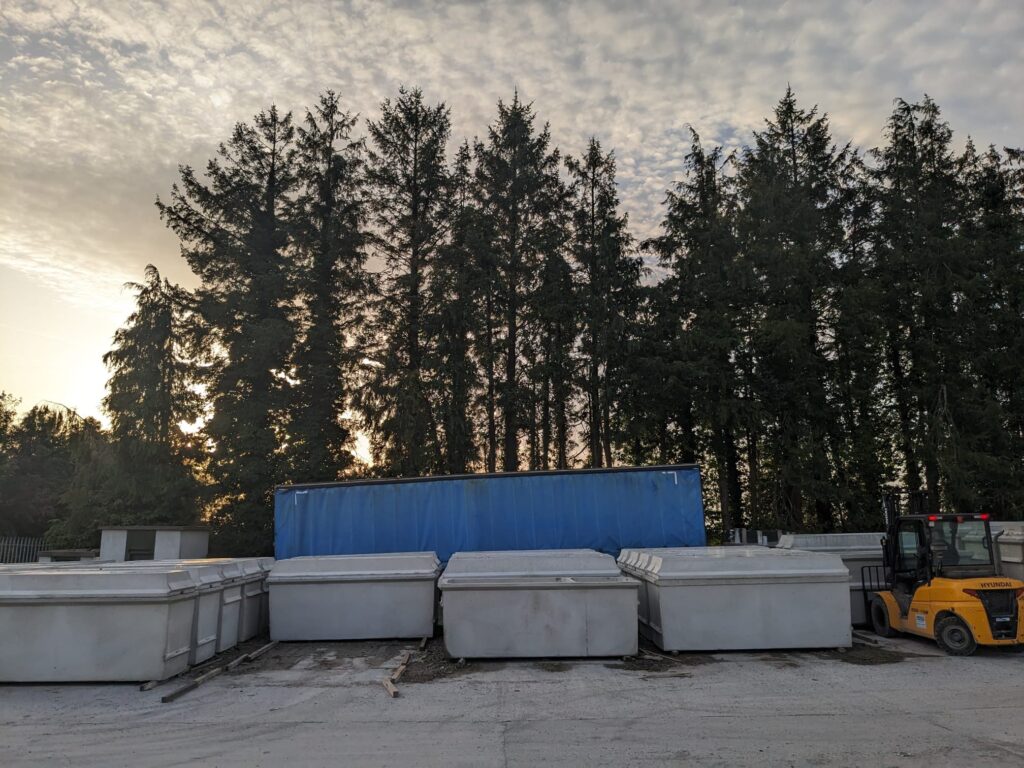
Septic Tanks
Effective and self-contained
Septic tanks are an exceptionally cost-effective and low-maintenance solution for domestic wastewater treatment, particularly suited to areas with the right soil and underground conditions. With Delaney Concrete, you benefit from a system that is both economical and efficient. By designing your site layout to enable gravity flow to and from the tank, you can significantly reduce the need for more costly infrastructure, like connecting to main sewer lines, installing pumps, or building additional treatment plants.
How much a Septic Tank Costs
Priced at €907.49 +VAT our standard Delaney Concrete Septic Tank caters comfortably to the needs of up to 8 people, making it an ideal choice for most family homes. For larger properties or commercial applications, we also manufacture substantially larger tanks to accommodate higher capacity requirements. In cases of very large systems, treatment plants may be necessary to ensure efficient processing of wastewater.
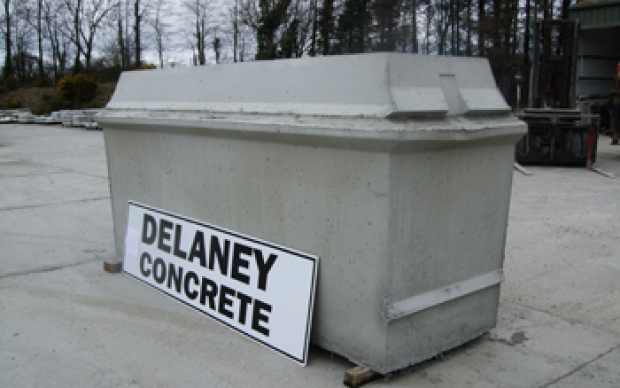

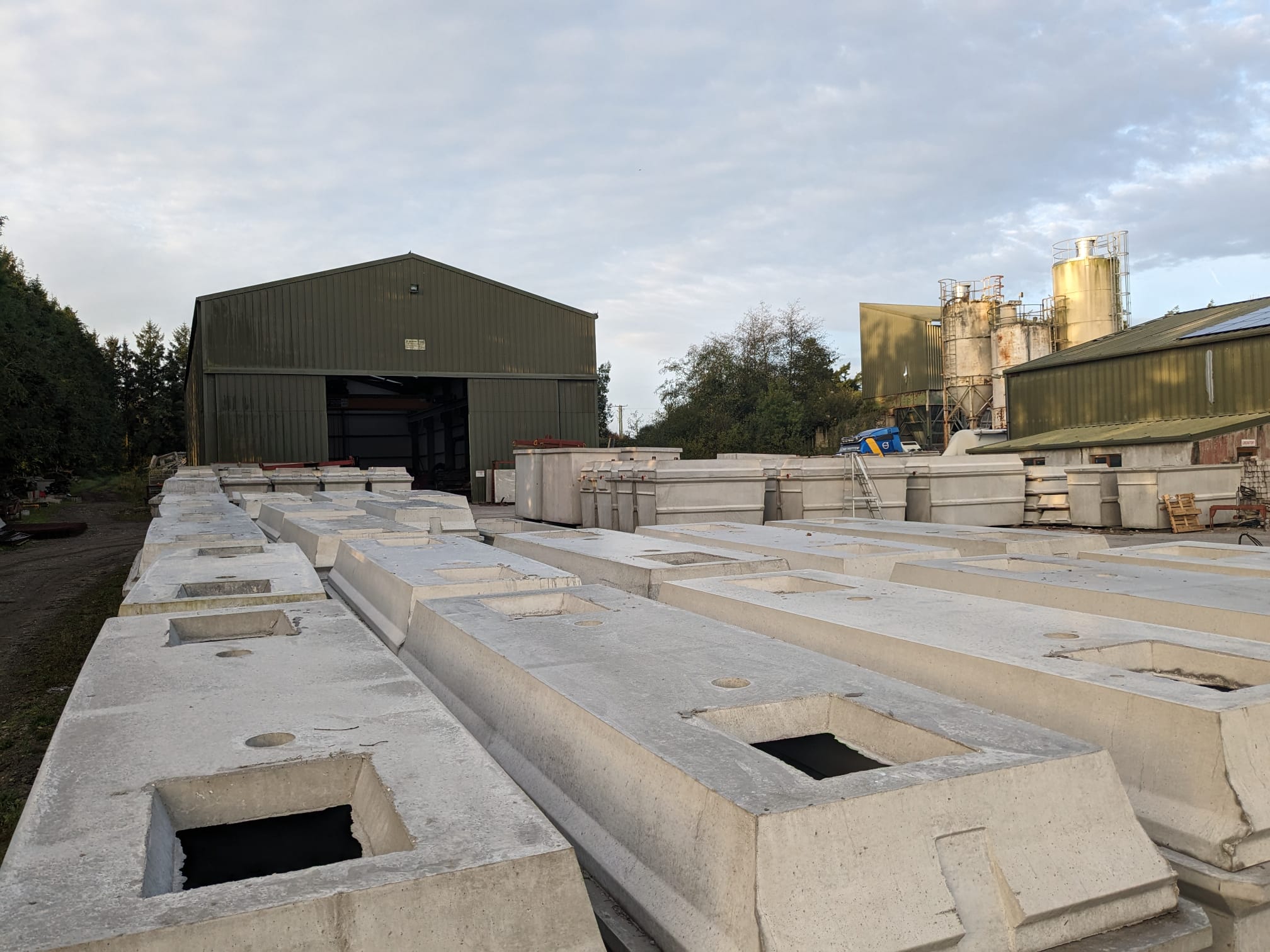
How A Septic Tank Works
Septic tanks facilitate the natural process of wastewater treatment. They separate solid waste from liquids, allowing bacteria and other microorganisms to break down and decompose the organic matter. Septic tanks are divided internally into two chambers the dividing wall etains the solid portion of your wastewater inside the tank, and the liquid portion of the wastewater passes through to the second chamber where smaller solids will settle out.

Finally the liquid portion of your wastewater will leave the septic tank and pass through your percolation area where it will receive further treatment in the soil and soak into the ground.
The solid portion of the wastewater is retained in the tank. Some of these solids will sink to the bottom of the tank to form a sludge layer, and some of these solids will float to the top of the tank and form a crust. A crust layer is a sign of a healthy tank and is important to keep smells inside the tank.

If you have limited on room for your percolation area, or require a treatment plant in your planning you may need to purchase a Bio-Crete.
Bio-Crete wastewater treatment system is the product of choice for thousands of homeowners, architects, soil testers, builders and installers. It is a concrete tank that is installed simply and quickly. It is a reliable and environmentally sustainable way to protect your local ground water. The Bio-Crete wastewater treatment system has been tested and certified by PIA in Aachen, Germany to EN 12566.
Upgrading your septic tank
There are many reasons to upgrade your existing septic tank for example it may be allowing the flow of effluent into your ground water. County councils are increasingly stepping up their activity in inspections of septic tanks. They often find below standard water quality in streams and trace upstream to any potential source. They may also get called out to inspect one house in an area and inspect every house on that road.
As always, we will offer advice on upgrading and grants.
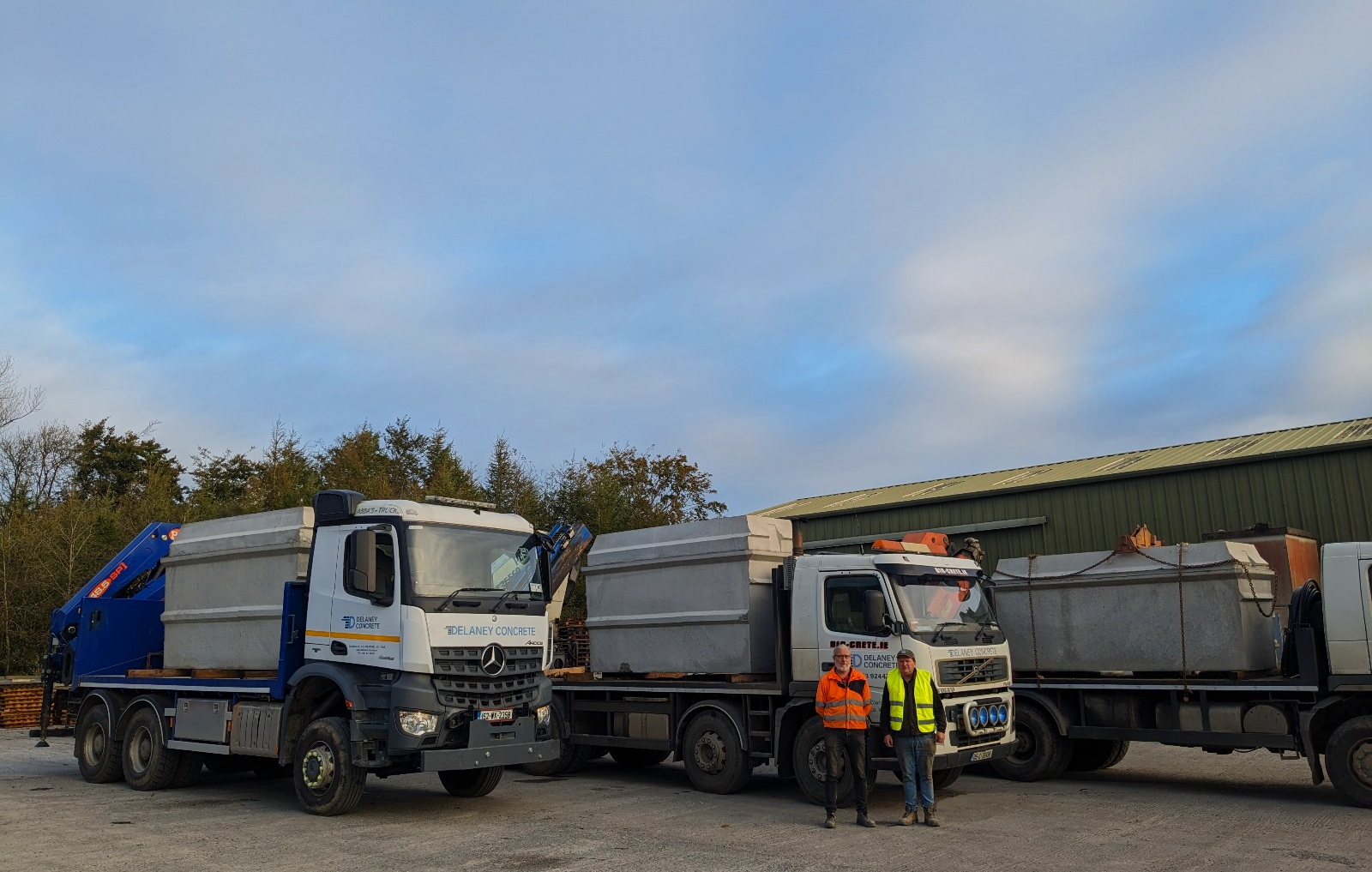
What you need to know for Installation
Our wastewater tanks are delivered by our trucks & cranes from our factory in Clonroche directly to your site. Our experienced lorry drivers are happy to help advise your digger driver to ensure your tank matches up with your pipework and is level in the excavation.
We are more than happy to talk you through the installation process over the phone.
Percolation Area Guide
Depending on the results of your soil test and site suitability report, a variety of different percolation types could be used. We can provide Coco filters, or 32mm pipe work for soil and sand polishing filters.
We are always on hand for advice and to talk your installer or digger driver through the process.
Certification
We use our on site laboratory to achieve the required level of performance, quality, and regulatory compliance.
More tank products
Delaney Concrete also stock a range of accessories for use with septic tanks. These include distribution boxes, risers, and SaniTEE effluent filters.
Water Storage tanks
We offer a multitude of different sizes of water storage tanks and rain water harvesting systems for domestic and commercial use.
Have a look at our full range and ask for a quote:
-
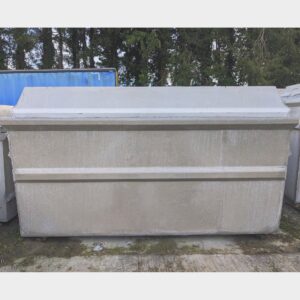
Tank – Septic Tank 4500 litre (Robust and High-Capacity)
€1,000.00 ex VAT
(€1,135.00 inc VAT) -
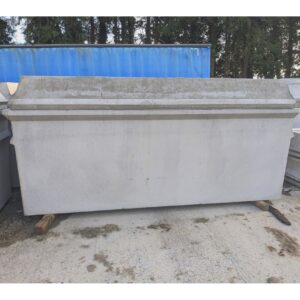
Tank – Septic Tank 3245 litre (Efficient Wastewater Solution)
€907.49 ex VAT
(€1,030.00 inc VAT) -
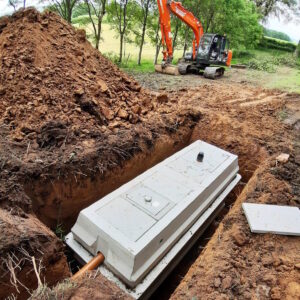
Bio-Crete Sewage Treatment Plant With Pumped Discharge
€3,700.44 ex VAT
(€4,200.00 inc VAT) -

Bio-Crete Sewage Treatment Plant (Gravity Discharge)
€3,436.12 ex VAT
(€3,900.00 inc VAT)
Expansive Market Reach of Delaney Concrete
Based in Clonroche, Co. Wexford, Delaney Concrete Ltd. prides itself on serving an extensive market area, reaching far beyond our local community to various parts of Ireland and even exporting select products to the UK. Our commitment to quality and customer satisfaction has enabled us to deliver our products and services to a wide array of locations, ensuring accessibility to top-tier concrete and wastewater solutions, regardless of where you are. We have successfully partnered with clients in key Irish areas including Co. Kilkenny (Thomastown, Bennettsbridge, Ballyragget, Callan), Co. Waterford (Portlaw, Dungarvan, Tramore), and Co. Cork (Youghal, Midleton, Fermoy, Mallow). Our reach extends to Co. Tipperary, notably in Clonmel, Carrick-on-Suir, Cahir, Cashel, and Tipperary Town, and in Co. Carlow with a presence in Tullow and Carlow Town. As a Co. Wexford-based company, we have a strong footprint in Bunclody, New Ross, Gorey, Enniscorthy, and Wexford Town. Furthermore, our services have been availed in Co. Kildare (Athy, Newbridge, Naas) and Co. Wicklow (Baltinglass, Blessington, Arklow, Rathnew, Greystones), demonstrating our capability to cater to diverse needs across regions. In addition to our comprehensive coverage in Ireland, our commitment to expanding our reach sees us exporting certain products to the UK, bringing the best of Irish manufacturing to a broader international market. At Delaney Concrete, we believe in building strong connections across communities and borders, ensuring that all our clients, irrespective of their location, receive the best of our products and expertise.

